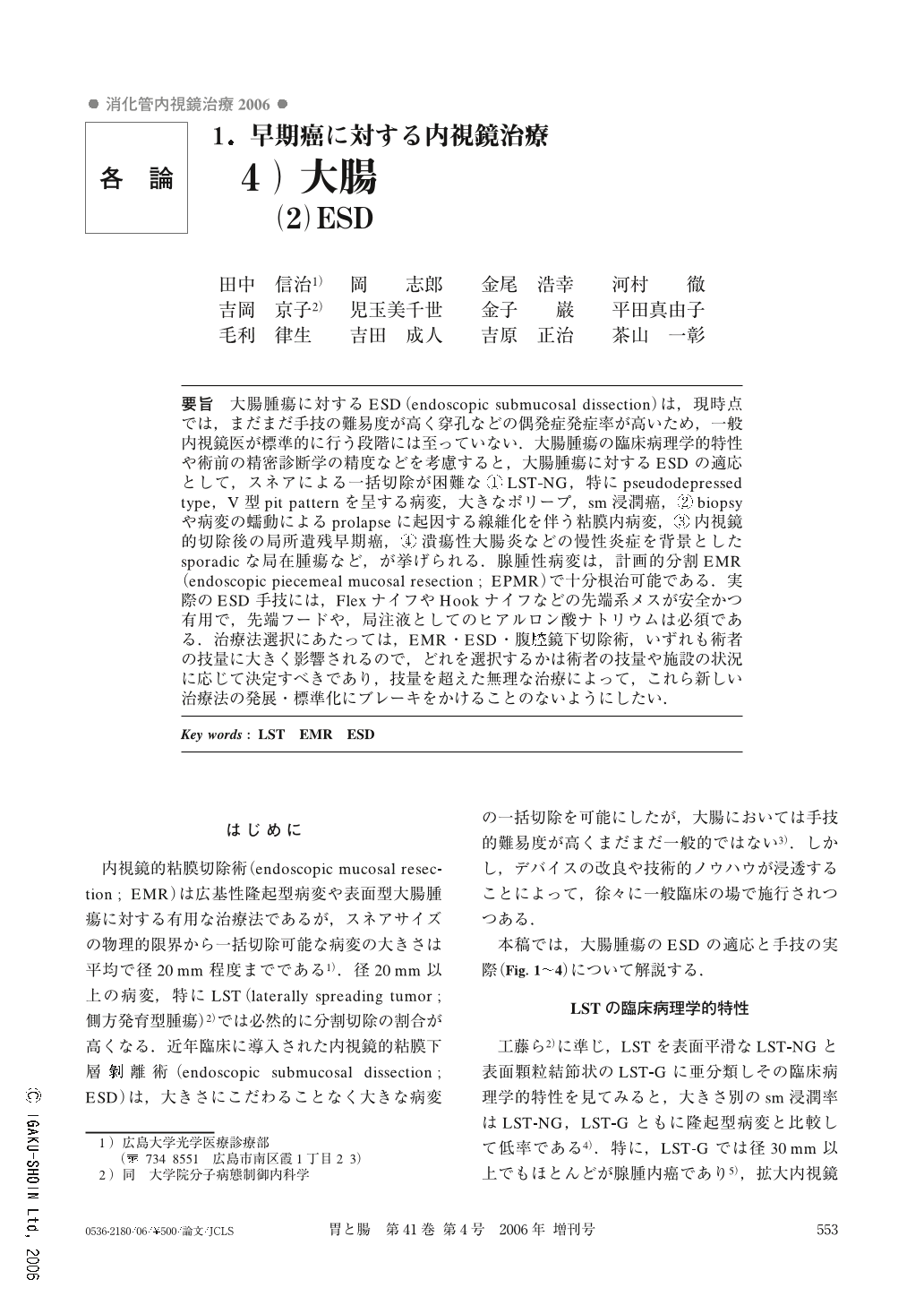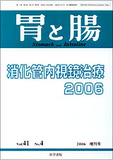Japanese
English
- 有料閲覧
- Abstract 文献概要
- 1ページ目 Look Inside
- 参考文献 Reference
要旨 大腸腫瘍に対するESD(endoscopic submucosal dissection)は,現時点では,まだまだ手技の難易度が高く穿孔などの偶発症発症率が高いため,一般内視鏡医が標準的に行う段階には至っていない.大腸腫瘍の臨床病理学的特性や術前の精密診断学の精度などを考慮すると,大腸腫瘍に対するESDの適応として,スネアによる一括切除が困難な①LST-NG,特にpseudodepressed type,V型pit patternを呈する病変,大きなポリープ,sm浸潤癌,②biopsyや病変の蠕動によるprolapseに起因する線維化を伴う粘膜内病変,③内視鏡的切除後の局所遺残早期癌,④潰瘍性大腸炎などの慢性炎症を背景としたsporadicな局在腫瘍など,が挙げられる.腺腫性病変は,計画的分割EMR(endoscopic piecemeal mucosal resection ; EPMR)で十分根治可能である.実際のESD手技には,FlexナイフやHookナイフなどの先端系メスが安全かつ有用で,先端フードや,局注液としてのヒアルロン酸ナトリウムは必須である.治療法選択にあたっては,EMR・ESD・腹腔鏡下切除術,いずれも術者の技量に大きく影響されるので,どれを選択するかは術者の技量や施設の状況に応じて決定すべきであり,技量を超えた無理な治療によって,これら新しい治療法の発展・標準化にブレーキをかけることのないようにしたい.
Indication for endoscopic submucosal dissection (ESD) of colorectal neoplasia should be that large LST-NG (especially pseudodepressed type) and mucosal carcinoma with fibrotic change showing non-lifting sign. In colorectal ESD, we usually use Flex and Hook knife because of their safety. Sodium hyaluronate is essential as injection fluid. Although, safety and standardization of colorectal ESD have not been yet established, this method will spread widely in the near future in accord with its mechanical and technical development.

Copyright © 2006, Igaku-Shoin Ltd. All rights reserved.


